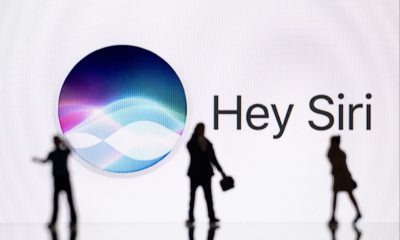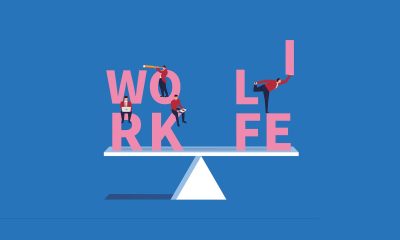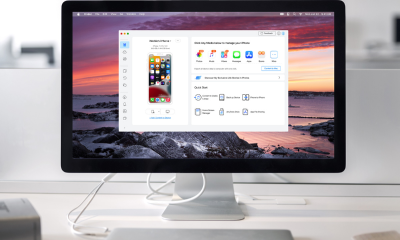Personal Finance
Consumer growing less satisfied with their auto insurance: J.D. Power

Auto insurance customer satisfaction decreased year-over-year by 12 points on a 1,000-point scale, according to a study by J.D. Power. That marked the largest decline in 20 years. Customer satisfaction with car insurance providers dropped to 822, down from 834 the year prior.
J.D. Power ties the decline to the higher costs of auto insurance. Nearly one-third (31%) of auto insurance customers said they saw a rate increase last year. The auto insurance industry raised rates an average of 15.5% in 2022, J.D. Power said. And satisfaction with the price of auto insurance declined 25 points, according to the study.
“Overall customer satisfaction with auto insurers has plummeted this year, as insurers and drivers come face to face with the realities of the economy,” Mark Garrett, J.D. Power director of insurance intelligence, said in a statement.
Auto insurance prices were three times higher than other categories tracked by the Consumer Price Index, a measure of inflation, according to the J.D. Power report.
However, usage-based insurance programs have more than doubled since 2016, J.D. Power said. The participation rate for these programs now is 17%.
If you’re having trouble making your car payments, it could benefit you to switch auto insurance providers to get a better rate and lower your monthly premiums. Visit Credible to get your personalized quote in minutes.
SUBPRIME-RATED CONSUMERS HAVE LESS ACCESS TO CREDIT – HERE’S HOW TO IMPROVE YOUR SCORE
Inflation cools again, but Fed could still raise rates
While the cost of used cars decreased by 5.2% year-over-year in June, the costs of new vehicles increased by 4.1%, according to the latest inflation numbers. Overall, inflation increased 3% in June, a decrease from the 4% annual inflation rate in May.
However, it’s unclear if the Federal Reserve would reverse its long-term trend of increasing interest rates to lower inflation.
“This is the third month in a row of a slowdown, increasing the odds the Fed is able to cut rates before seeing material economic weakness,” J.P. Morgan Senior Markets Economist Stephanie Roth said in a statement. “Said differently, this should equate to a more mild growth slowdown than we had previously expected.”
Most recently, the Fed paused interest rate hikes in June after having raised rates 10 times in 2022 and 2023. But although inflation is slowing, the Fed could raise interest rates again.
“The jobs market isn’t nearly as brisk as it was over the past few years, but even the sharp slowdown in job creation hasn’t been enough to push the unemployment rate meaningfully higher – a key ingredient to the Fed’s recipe to bring inflation back down to its 2% target,” Jim Baird, Plante Moran Financial Advisors chief investment officer said in a statement.
“The ‘long and variable lag’ in monetary policy notwithstanding, there’s not yet been enough evidence in the hard data to convince policymakers that enough has been done to arrest inflation,” Baird continued.
Any increase to inflation could raise what consumers pay on financing including auto insurance.
If you’re looking to reduce your overall automobile payments, you could consider switching auto insurance providers to lower your interest rate. Visit Credible to speak with an insurance expert and get your questions answered.
INFLATION SHRINKS SUMMER VACATION BUDGETS FOR MANY AMERICANS, SURVEY SAYS
Recession fears remain
Despite a cooling of inflation in the U.S., some economists believe the globe may head toward a recession.
“The global economy is on a downward trend, weakened by high inflation, tighter monetary policy, tight labor markets, mild recessions in several economies, weakness in China’s growth, and pandemic-driven economic scarring,” The Conference Board said in a post.
Recessions are typically defined by a fall in gross domestic product (GDP) over two successive quarters. GDP increased in the past two quarters, but at a slow overall pace.
GDP increased at an annual rate of 2% in the first quarter of 2023, according to the third and final estimate released by the Bureau of Economic Analysis (BEA). That indicated a slowdown from the 2.6% increase seen in the final quarter of 2022. One expert said an economic slowdown is possible.
“A range of leading indicators point to a meaningful probability of recession in the coming quarters at the same time that the Federal Reserve ups the ante on rate hikes as they continue to wage their focused fight to tame inflation,” Baird said.
Furthermore, Fed policymakers have signaled they could increase rates again this year, Federal Reserve Chair Jerome Powell told reporters at a press conference.
“Looking ahead, nearly all Committee participants view it as likely that some further rate increases will be appropriate this year to bring inflation down to 2 percent over time,” Powell said. “And I will have more to say about monetary policy after briefly reviewing economic developments.”
The Fed is scheduled to meet again on July 25. Should it raise rates once more, the move could affect what consumers pay on auto insurance.
If you’re trying to lower your overall auto costs, you could consider changing auto insurance providers. Visit Credible to compare quotes from different companies without affecting your credit score.
THESE TWO FACTORS COULD BE DRIVING YOUR CAR INSURANCE COSTS UP
Have a finance-related question, but don’t know who to ask? Email The Credible Money Expert at moneyexpert@credible.com and your question might be answered by Credible in our Money Expert column.
Read the full article here

-

 Side Hustles6 days ago
Side Hustles6 days agoHow to Create a Unique Value Proposition (With Tips & Examples)
-

 Side Hustles6 days ago
Side Hustles6 days agoThe DOJ Reportedly Wants Google to Sell Its Chrome Browser
-

 Investing5 days ago
Investing5 days agoAre You Missing These Hidden Warning Signs When Hiring?
-

 Make Money5 days ago
Make Money5 days ago7 Common Things You Should Never Buy New
-

 Investing7 days ago
Investing7 days agoThis Founder Turned a Hangover Cure into Millions
-

 Investing2 days ago
Investing2 days agoThis All-Access Pass to Learning Is Now $20 for Black Friday
-

 Side Hustles3 days ago
Side Hustles3 days agoApple Prepares a New AI-Powered Siri to Compete With ChatGPT
-

 Passive Income2 days ago
Passive Income2 days agoHow to Create a Routine That Balances Rest and Business Success


















